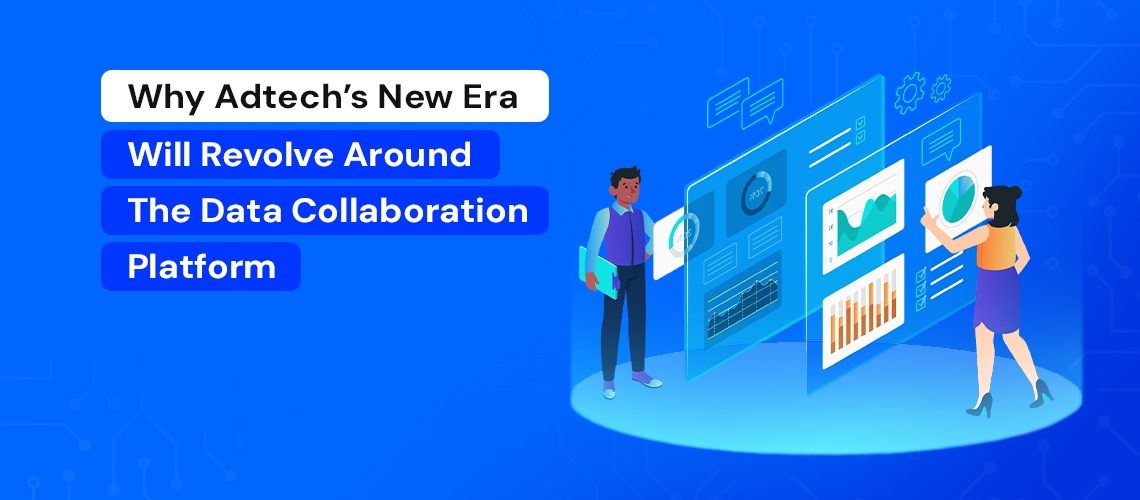The first wave of open web advertising technology companies were founded around 2006 and 2007, marking a key launch phase for data-driven programmatic advertising.
These data exchanges and trading platforms focused on the holy alliance between the DSP and the SSP, enabling brands to buy digital advertising inventory across the publisher landscape. Then along came the DMP (data management platform) for brands to house and manage a myriad – and ever increasing – data sources.
However, DMPs had their limitations and could not scale. They were also sideswiped by the inexorable growth of the big digital advertising platforms, specifically Facebook, Google, and now Amazon Ads. As the walled gardens grew in scale, it became harder to create a business model for DMPs, because large brands simply poured billions of ad dollars into the Big Tech platforms for fear of missing out on hyper growth.
Innovation stalled for a while, and the collective advertising tech industry embarked on a mergers and acquisition spree focused on the creation of data, audience, and analytics capabilities. Unfortunately, it also delivered a confusing marketplace for marketers and advertisers.
“The industry has been on a bit of a shopping spree the last decade, in a bid to make sense of its data, create better products and services, and keep up with Google, Facebook, and Amazon,” noted data clean room provider Optable in a recent white paper. “It’s created an untethered sprawl of adtech and data management solutions.”
The future of data collaboration that works

After more than 15 years of data sharing and activation in digital advertising, involving platforms, publishers, and advertisers, the market is changing yet again.
The data clean room and CDP (customer data platform) have now emerged as the requisite technology for any major brand to deploy their customer data into an open web anonymized data marketplace. But it has not gone far enough, and even the leading data clean room providers now want to be viewed as collaboration partners, and work in close concert with brands and publishers. They will need to earn their trust.
The adtech industry knows that collaboration is vital to its future, and marketers understand they need effective platform and technology partners in order to extract value from their data. However, brands remain fearful of data leakage, or a customer data breach, and entrusting their sensitive first party data to external partners. The global implementation of rigid personally identifiable information (PII) laws has meant that sensitive customer data had to be locked up and safe.
In the 2012-2014 Big Data boom, the focus was on scale, audience size, and data collection. Now, advertisers want to use their own data in a meaningful way, and remove the spaghetti like problem of having their data sitting in silos, often not activated, and quite often, of poor quality. As Optable notes, data warehouses, DMPs, and CDPs “are not a cure-all and aren’t designed for a future in which media companies share data directly with their advertising partners for secure collaboration and analysis.”
Enter the Data Collaboration Platform (DCP), a new acronym highly likely to enter the lexicon for data-driven marketers and advertisers in 2024 and beyond. The DCP will move to the front and center of data-driven advertising, as marketers grapple with the tension of securing ROAS (return on advertising spend), and scrambling for privacy compliance.
Privacy-enhancing technologies will rise
The IAB in Australia produced a report in the first half of this year that has struck at the main challenge for brands in the latter part of the 2020s, noting the increasing heft of new privacy regulations around the world.
“The future evolution of data collaboration will be heavily influenced by the advancement of technology and development of global regulations, particularly in the areas of privacy, control, and artificial intelligence, the IAB said in its report.” As privacy concerns continue to rise, there will be an increased demand for privacy-enhancing technologies that enable secure data sharing while preserving data privacy, allowing businesses to collaborate with greater confidence.”
Choosing a data collaboration platform will be crucial for brands seeking a competitive advantage with their data-driven advertising, says the IAB. It recommends brands ask detailed questions, including:
- – How many datasets, of what size and what level of complexity can the solution connect with and run computation against?
- – Does the solution allow for real-time activation via integrations with activation channels, and if so – which activation channels are supported?
- – Does the solution provide advanced analytics and machine learning capabilities, enabling advertisers and the media supply chain to extract valuable insights, build audience segments, and easily visualize the results?
- – Is there a limit on the number of Data Contributors or other participants that can interact in the same available solution?
- – Can the solution handle various data types, formats, and sources, including first-party, second-party, and third-party data?
The questions don’t end there, highlighting the complexity of the future digital advertising landscape. Data collaboration platforms at a minimum must meet legal requirements, including whether the solution offers features such as comprehensive audit capabilities (reactive measures) or controls to ensure compliance (proactive measures), the IAB notes.
Furthermore, the IAB said different data collaboration solutions offer varying levels of data protection and privacy-enhancing technologies, while others apply privacy and security protections by default with granular controls to further restrict or lessen obfuscation.
Innovation will form the basis of successful ventures

When selecting a solution, it is important to identify what level of data protection is required for the specific use case. It’s important to consider factors such as what type of data is being shared, who it’s being shared with, and how it will be used, the IAB said.
As the VP of identity at DSP Adform, Andreas Sierts, wrote recently, “where data is collected and how it is used remains a complex, confusing and evolving topic for marketers.” He urges brands and their technology partners to innovate and work together to find workable solutions that enable compliant growth under more restrictive regulatory regimes. And that may mean forging new partnerships outside of the current sphere of influence.
“The key to the future of digital advertising is collaboration with other organizations that have the crucial customer insights needed to target and measure campaigns. Rather than try to compete directly with the heavyweight walled gardens, the wider ad tech community should start to draw on the experience and data resources of unconventional partners, such as the leading telcos,” Sierts wrote.
He added: “By doing so, ad tech can ensure alignment with privacy regulations and build better first-party data solutions together, delivering real value and scale to marketers while maintaining the trust of customers.”
They say teamwork makes the dream work, and in digital media and marketing, it’s going to have to. It’s increasingly clear that true, multiparty collaboration is now required to deliver effective advertising performance.


